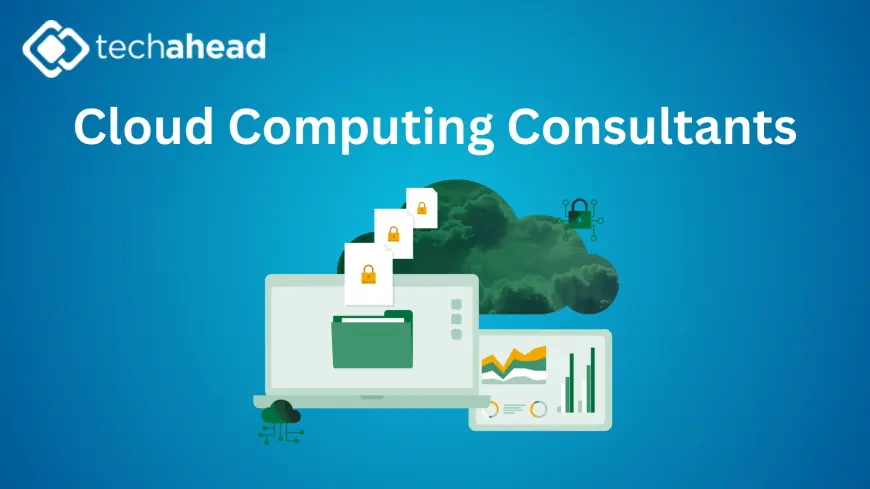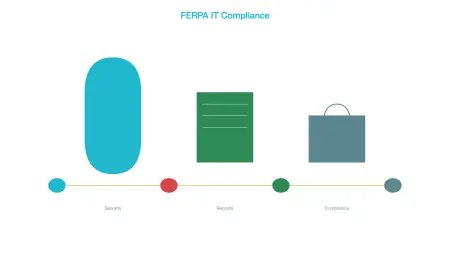Generative AI in Production: A Practical Blueprint for Enterprises
Generative AI has shifted from novelty to necessity. In 2025, it sits in the critical path for support, analytics, operations, and customer experiences.

Generative AI has shifted from novelty to necessity. In 2025, it sits in the critical path for support, analytics, operations, and customer experiences. The stakes are higher: outputs must be trustworthy, latency predictable, and costs defensible. The enterprises shipping dependable AI features at scale share a blueprint: they define clear business patterns, build modular retrieval-augmented systems, manage a portfolio of models, and treat prompts, policies, and evaluations as code. Most importantly, they lean on cloud computing consultants to compress the learning curve and turn one-off pilots into a platform via a disciplined cloud consulting service.
Anchor Use Cases to Business Patterns
The strongest programs start by naming the patterns, not the models. Four dominate in 2025: assistive search over proprietary content, structured summarization of long records, workflow acceleration for internal teams, and bounded agents that perform multi-step tasks with controls. The decision that follows—advisory with a human in the loop or automated with deterministic guardrails—drives latency budgets, evaluation plans, and risk posture. A good cloud consulting service will codify each pattern as a reusable template with default prompts, schemas, policies, and observability.
RAG-Assembled, Not End-to-End Magic
For most enterprise scenarios, retrieval-augmented generation (RAG) is the default spine because it grounds responses in your data and reduces hallucinations. The production pattern is intentionally modular: a retriever that blends keyword, vector, and sometimes graph signals; a router that selects the right model by complexity, sensitivity, and budget; a generator with strict prompt templates; and a policy layer that validates structure, redacts sensitive content, and enforces rules. Keeping components loosely coupled lets you upgrade the retriever or swap models without rewriting the world—a design choice that pays off with every iteration.
Data Pipelines Built for Grounding
Your differentiation is your data. Production systems require versioned pipelines that move content from systems of record into a secure knowledge store. Treat ingest like software: schema contracts, change management, deduplication, and enrichment with entities, classifications, and access tags. Chunking for embeddings should respect domain semantics—paragraphs for policies, sections for manuals, play-by-play for support transcripts—so retrieval is precise and context windows stay lean. Always store citation anchors (document IDs, sections, timestamps) so responses can reference sources and audits can reconstruct “why the model said that.”
Guardrails You Can Prove
Safety succeeds when it’s layered and measurable. Start with prompt templates that constrain behavior and clearly instruct the model to cite and to refuse when unsure. Add content filters that catch PII, toxicity, or regulated terms. Implement a policy engine that deterministically blocks or transforms outputs when rules match—think masking account numbers or routing regulated queries to human review. Log prompts, retrieved passages, model choices, and policy decisions with selective redaction, so you can pass audits without leaking sensitive data. cloud computing consultants translate legal language into enforceable rules and instrument dashboards that show policy coverage by use case.
Portfolio Thinking Beats Model Monocultures
There is no single best model. Production teams manage a portfolio. Compact models handle routing, classification, and short summaries where latency and cost are strict. Mid-sized models cover everyday synthesis. Larger models are reserved for complex reasoning or creative synthesis where the stakes justify the spend. A router chooses based on request features, sensitivity tags, and real-time budget signals. Over time, learned routing and fine-tuned smaller models capture most traffic, shrinking average token costs while improving speed. The portfolio mindset is how 2025 programs keep quality high and unit economics healthy.
Prompts, Retrieval Parameters, and Policies as Code
Prompts are not strings; they’re artifacts. Store them in version control with change history, ownership, and tests. The same goes for retrieval parameters and policy rules. Write unit tests that validate structured output, safety refusals, and formatting. Implement canary releases for prompts and retrievers: send a slice of traffic to a new version, run automatic evaluations, and roll back on regression. Treat this configuration as part of your production codebase with reviews, approvals, and release notes. A mature cloud consulting service will set this up so teams iterate without breaking trust.
Observability That Explains Behavior, Not Just Uptime
Classic APM stops at the API; LLM systems need deeper signals. Instrument retrieval coverage (the share of queries with high-confidence context), grounding scores that measure alignment between outputs and retrieved passages, token usage by component, and full latency breakdowns across retrieval, generation, and post-processing. Add continuous evaluation pipelines: judge models for fast signal and human spot checks for high-stakes flows. Build per-use-case dashboards that show quality trends alongside cost and latency. When quality dips, your telemetry should point to the root: retriever index drift, router misclassification, prompt regression, or a model update.
Cost Discipline Without Sacrificing UX
Token costs compound quickly. Practical controls include context compression that preserves diverse, high-relevance passages; citation-aware truncation; caching embeddings and frequent answers with TTLs matched to content freshness; and budget-aware routing that caps premium model usage for low-risk tasks. For repetitive workloads, fine-tune or adapter-train smaller models to approach large-model quality at a fraction of the price. The most effective teams make cost a first-class metric in design reviews. cloud computing consultants can wire budget alerts and graceful fallbacks so features degrade to faster, cheaper paths rather than failing.
Structured Outputs, Tools, and Agents
Enterprises prefer structure to prose. Ask for JSON that matches a schema and validate strictly before any side effects. For tool use, require explicit plans: the model outlines steps, then calls tools with idempotency tokens, timeouts, and rate limits. Capture a change log with user and model attribution. Bounded agents should have a narrow capability set, clear stopping conditions, and human approvals for irreversible actions. Over time, the most dependable agentic systems minimize free-form exploration and maximize deterministic subroutines.
Security, Privacy, and Residency by Design
AI amplifies existing security responsibilities. Keep sensitive data in your control plane with private connectivity, row- or attribute-level access tied to user entitlements, and encryption at rest and in transit. Partition indices by residency region and ensure router rules respect geography. Scrub unnecessary fields in prompts and redact at egress where policy demands. Separate key management duties from application teams. For internal troubleshooting, log hashed references to sensitive identifiers so you can correlate issues without exposing raw data.
From Pilot to Platform: Avoid the Snowflake Trap
The biggest trap is rebuilding the stack for every use case. Instead, create platform services for retrieval, prompt management, model routing, policy enforcement, and evaluation. Publish a developer portal with examples, SDKs, and guardrails. Provide paved-road templates for each pattern so product teams can deliver in weeks, not months. cloud computing consultants often bootstrap this platform, then mentor internal teams to own and evolve it—your velocity is the success metric.
Evaluation as a Habit, Not a Ceremony
Subjective demos belong in kickoff meetings, not release gates. Build living evaluation sets from real queries, labeled for factuality, relevance, tone, safety, and format adherence. Run evals on every meaningful change—model swap, prompt tweak, reindex—and track longitudinal trends. Use judge models for coverage and human reviewers for high-risk flows. Tie evaluation outcomes to routing choices so the system self-optimizes toward the best model per task.
Change Management: Skills and Operating Model
Shipping dependable AI features requires new muscles. Product managers define evaluation goals and safety requirements as first-class acceptance criteria. Engineers learn to debug retrieval relevance and prompt behavior. Analysts and SMEs curate domain-specific evaluation sets and canonical source libraries. Security partners early to encode policy as code rather than manual approvals. A lightweight governance board reviews new AI use cases against a checklist—data sources, safety plan, eval metrics, fallback strategy—so you move fast within guardrails.
Incident Response for AI Quality and Safety
Treat AI incidents with the same rigor as reliability incidents. Define severities from cosmetic phrasing issues to critical policy violations. Create playbooks that disable a prompt version, pin routing to a safe model, reduce context scope, or force human approval. Practice tabletop drills for realistic failures: an index update that shifts relevance, a model update that changes tone, a policy misconfiguration that leaks sensitive fields. Measure mean time to detect and mitigate for quality incidents; instrument alerts on grounding score drops and policy violations.
Procurement and Vendor Strategy: Flexibility Without Sprawl
Vendors change fast in this space. Avoid lock-in by decoupling your architecture with standard interfaces for models and retrievers, and by maintaining a portfolio across providers. At the same time, avoid tool sprawl by standardizing on a small set of building blocks that your platform team can support. Negotiate commitments where usage is predictable and keep exploratory capacity flexible. cloud computing consultants can help quantify the premium you’re paying for portability and ensure it’s applied where it meaningfully reduces risk.
Measuring ROI That Finance and Product Both Trust
Tie investment to unit economics and user outcomes. Track cost per resolved query, cost per assisted workflow, cost per inference by route, and incremental conversion or retention from AI features. For internal use cases, measure cycle time reduction, deflect rate in support, first-contact resolution improvements, and developer satisfaction. Put these next to quality metrics—grounding, factuality, compliance—and latency. Tradeoffs become explicit and defensible: some regulated workflows accept higher latency and cost for guaranteed safety; others optimize for speed with smaller models and concise prompts.
A 90–180 Day Execution Plan
Phase 1 (Weeks 1–4): Frame patterns and target use cases; stand up the initial platform services for retrieval and prompt management; define evaluation sets and safety policies for one high-impact feature. Phase 2 (Weeks 5–10): Implement modular RAG for the first use case with model routing, structured outputs, and policy enforcement; instrument observability; run canary tests and ship to a pilot cohort. Phase 3 (Weeks 11–18): Expand platform with a policy engine, budget-aware routing, and automated evaluations; onboard two additional use cases using paved-road templates; negotiate model commitments based on actual usage; conduct the first AI incident drill and publish learnings. By Day 180, you should have a repeatable path to add new AI features, with governance, evaluation, and cost controls in place.
Case Study Pattern: From PoC Pile-Up to Platform Velocity
A large insurer had six AI pilots across departments—each with different stacks, none production-ready. With guidance from cloud computing consultants, they consolidated on a shared retrieval service, a prompt/policy registry, and a router that balanced cost and sensitivity. They curated evaluation sets from historical tickets and claims, implemented attribute-based access for PII, and set token budgets with graceful fallbacks. Within three months, support deflection climbed 22% with grounded answers and citations; average response latency fell by 35% after routing low-complexity queries to compact models; and monthly token spend stabilized with a 28% reduction from caching and context compression. Most importantly, new use cases moved from concept to pilot in weeks using the platform.
Common Pitfalls—and Better Alternatives
- Pitfall: One giant model for everything. Alternative: Model portfolio with routing and fine-tuned small models for narrow, high-volume tasks.
- Pitfall: Stuffing massive context windows to “improve quality.” Alternative: Smarter retrieval, chunking, and summarization with citation-aware truncation.
- Pitfall: Treating prompts as throwaway strings. Alternative: Prompts and retrieval parameters versioned, tested, and canaried.
- Pitfall: Rebuilding custom stacks per team. Alternative: Platform services for retrieval, prompts, routing, policy, and evaluation with paved-road templates.
- Pitfall: Ignoring audits until launch. Alternative: Policy-as-code, selective redaction, and complete decision logs from day one.
- Pitfall: Cost vigilance as a monthly report. Alternative: Budget-aware routing, token caps, caching, and cost alerts routed to feature owners.
Where Experts Accelerate Outcomes
Seasoned cloud computing consultants bring reference architectures for RAG, policy layers mapped to regulations, model routing heuristics, and evaluation playbooks you can adopt immediately. They also bring the change management patterns—templates, docs, SLAs, governance checklists—that turn a fragile PoC into a dependable platform. A strong cloud consulting service will measure its success by the speed and safety with which your teams ship the next five AI features, not by the length of a parts list.
Conclusion
In 2025, the organizations that win treat generative AI like any other critical system: modular, observable, governed, and cost-aware. They ground outputs in curated data, enforce layered guardrails they can audit, instrument end-to-end behavior, and manage a pragmatic model portfolio with clear budgets. They scale through shared platform services and paved roads that make the right thing the easy thing. With the guidance of cloud computing consultants and a disciplined cloud consulting service, you can turn pilots into a durable advantage—AI that customers trust, teams can iterate, and finance can forecast.
What's Your Reaction?
 Like
0
Like
0
 Dislike
0
Dislike
0
 Love
0
Love
0
 Funny
0
Funny
0
 Angry
0
Angry
0
 Sad
0
Sad
0
 Wow
0
Wow
0




















































